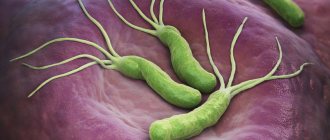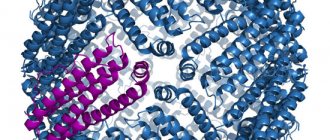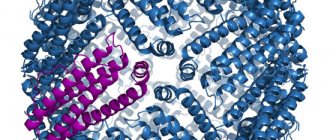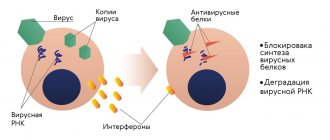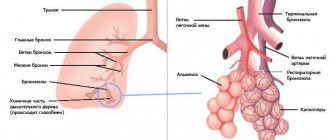Complexes with this research
Advanced anti-aging diagnostics in postmenopause Advanced control of age-related changes during postmenopause 19,860 ₽ Composition
Anti-aging diagnostics in postmenopause Control of age-related changes during postmenopause 7,440 ₽ Composition
Male anti-aging diagnostics Monitoring of basic indicators in men aged 40+ 7,900 ₽ Composition
IN OTHER COMPLEXES
- Vegetarians and vegans RUB 3,560
- Advanced male anti-aging diagnostics RUB 22,840
- Advanced women's anti-aging diagnostics RUB 19,540
- Blue blood RUB 1,980
- Monitoring the diet of a nursing mother RUB 1,700
Preparing to donate blood
For this test, blood from a vein is taken on an empty stomach (food should not be consumed for 8 hours). During this period, only clean water is allowed; tea, coffee and carbonated drinks must be excluded. For half an hour before donating blood, you should avoid significant physical activity and stop smoking. Taking medications that contain iron should be stopped three days before the test (you should consult your doctor before stopping taking them).
Recommendations for preparation may be provided by the attending physician or laboratory staff.
General recommendations:
- avoiding drinks that contain sugar and caffeine;
- blood is donated on an empty stomach in the first half of the day (the fasting period should be 8-12 hours);
- It is recommended to quit smoking an hour before taking blood.
On the day of blood collection, you can only drink plain water (carbonated drinks, including those without sugar, should be excluded).
Detailed description of the study
Ferritin is a protein complex with iron ions. It is found in muscle, liver, spleen, bone marrow, reticulocytes (red blood cell precursor cells) and serum and is a form of iron reserve in the human body - one ferritin molecule can bind up to 4,000 iron atoms. When there is a lack of iron in the body, the ferritin reserve begins to be used. Thanks to this, the level of iron in the blood remains relatively constant.
A decrease in plasma ferritin levels serves as an indicator of iron deficiency and may indicate anemia (anemia). The most common manifestations of this condition are weakness and fatigue, drowsiness, pale skin, headache, dizziness, darkening of the eyes and tinnitus when changing body position.
The risk group for developing anemia includes:
- Women of childbearing age due to monthly blood loss;
- Pregnant women due to increased resource consumption of the body;
- Vegetarians and vegans due to insufficient intake of iron from food;
- People with gastrointestinal disorders due to iron malabsorption;
- Patients with chronic hemorrhoids;
- People over 65 years of age.
An increase in serum ferritin concentration can be observed in pathologies such as:
- Destruction of muscle tissue;
- Fractures of large bones;
- Extensive hematomas;
- Injuries to the spleen and inflammatory processes in it;
- Hematological diseases;
- Liver damage (viral hepatitis, liver necrosis);
- Kidney failure.
Determination of ferritin levels is used for the diagnosis and differential diagnosis of not only iron deficiency, but also the pathologies listed above.
Physiological significance Ferritin is a soluble, easily mobilized iron depot necessary for effective erythropoiesis. One ferritin molecule is capable of holding up to 4500 iron atoms in the internal cavity in the form of a complex of hydroxides and phosphates. At the same time, it protects the body from the toxic effects of iron, keeping it in an oxidized trivalent state, unable to catalyze the production of free radicals. Ferritin is predominantly found in the cells of the liver, spleen, red bone marrow and reticulocytes, where the processes of synthesis, maturation and degradation of red blood cells occur most intensively. Ferritin is present in small quantities in the blood serum, where it enters as a result of active secretion and destruction of cells, and its concentration makes it possible to adequately assess both the total amount of iron in the body and its reserves.For healthy individuals, an equivalence factor has been proposed: the concentration of 1 ng/ml ferritin in serum corresponds to 8 mg of iron stored in the depot
Serum ferritin levels are normal
Age Ferritin content, ng/ml=µg/l Newborns 25 – 200 1 month 200 – 600 6 months – 15 years 30 – 140 Adults:
Men 20 – 350 Women 10 – 150 Pregnancy: 1st trimester 56 – 90 2nd trimester 25 – 74 3rd trimester 10 – 15
The concentration of ferritin at birth is increased - up to 600 ng/ml due to the transition from the fetal to the adult form of hemoglobin; over several months it decreases to approximately 30 ng/ml, after which it begins to slowly increase and by the age of 24–25 takes values that remain up to old age.
Clinical and diagnostic value
Ferritin concentration below 10 ng/ml - presence of iron deficiency anemia (IDA)
According to WHO, about a third of the world's population suffers from hidden iron deficiency and iron deficiency anemia (WHO, 1998).
Determining the concentration of ferritin in the blood allows you to: • differentiate iron deficiency anemia from other types of anemia, the pathogenesis of which is not related to iron (IDA accounts for about 80% of the incidence of all types of anemia), • monitor iron reserves in the body of people at risk. Risk groups for this indicator are : • children and adolescents during the period of intensive growth, puberty (especially girls), • pregnant women (III trimester - especially carefully) and lactating women, • blood donors, • patients constantly undergoing hemodialysis, • persons with insufficient and unbalanced nutrition, incl. population living in areas with iron deficiency in water and food (North, Eastern Siberia, Northern Caucasus), unfavorable environmental conditions. Iron deficiency is detected in 20-25% of all infants, 43% of children under 4 years of age and 37% of children from 5 to 12 years of age (WHO, 1992). Even in developed countries, these figures are no lower than 12% in children under 4 years of age and 7% in children from 5 to 12 years of age. Anemia leads to a slowdown in the physical and mental development of children. Iron deficiency is found in more than 50% of women of childbearing age. In the third trimester of pregnancy, 90% of women have iron deficiency. Anemia is a common cause of intrauterine fetal death, low birth weight of newborns, and accounts for up to 20% of deaths in pregnant women. IDA is an aggravating factor in diseases of the cardiovascular and digestive systems, is the cause of long-term remission after respiratory infections, causes menstrual irregularities, and is one of the causes of chronic fatigue syndrome.
Determination of ferritin can be used to diagnose and monitor a number of cancers . Elevated concentrations of ferritin are found in the serum of patients with pancreatic carcinoma, lung cancer, hepatoma and neuroblastoma, acute leukemia, and metastatic breast cancer. In oncological diseases, the concentration of ferritin in the blood is increased both due to its active secretion and due to increased cell breakdown due to chemotherapy. After successful treatment, serum ferritin concentration decreases.
This indicator is also valuable for the diagnosis of hemochromatosis , which occurs in people regularly exposed to blood transfusions or iron replacement therapy for sideroachrestic and hemolytic anemias. In case of iron overload in the body, the ferritin concentration exceeds 400–500 ng/ml, and in cases of pronounced hemochromatosis it reaches several thousand ng/ml. Factors and conditions that increase the level of ferritin in the blood: Some acute and chronic liver diseases (alcohol damage, hepatitis) Fasting and exhaustion Inflammatory diseases (pulmonary infections, osteomyelitis, urinary tract infections, rheumatoid arthritis, systemic lupus erythematosus) Myocardial infarction Use of chemotherapy (and , as a consequence, cell necrosis) Exogenous iron overload (regular blood transfusions) Factors and conditions that reduce the level of ferritin in the blood IDA Late pregnancy Blood loss Nonspecific protein loss
Ferritin and the thyroid gland
The production of ferritin depends on hormonal levels, and, in particular, on the functioning of the thyroid gland. Thyroid hormones affect the synthesis of red blood cells, the absorption of iron in the stomach and the absorption of vitamins B12 and B9.
Among all thyroid diseases, there are 2 diseases that are characterized by hormonal imbalance:
- low levels of thyroid hormone concentrations – hypothyroidism;
- increased production of thyroid hormones – hyperthyroidism.
90% of patients with low ferritin levels are women
90% of patients with low ferritin levels are women. In men, low ferritin levels are diagnosed in childhood in the presence of autistic disorder and inhibited psychomotor development.
How does hypothyroidism affect ferritin levels?
- red blood cell renewal slows down. The less often red blood cells are renewed, the less iron, or catabolic ferritin, is released;
- Acidity in the stomach decreases. In such an environment, anabolic ferritin is not formed, in other words, ferric iron is not converted into ferrous iron. It is either poorly or not absorbed at all in the intestines;
- Castle factor, necessary for the absorption of vitamins B12 and B9, is produced in smaller quantities;
- Hormones are closely interrelated; a decrease in the level of one of them certainly leads to a decrease in the level of the other. The level of thyroid-stimulating hormone (TSH) depends on the level of the hormones thyroxine (T4) and triiodothyronine (T3). They, in turn, are affected by the enzyme thyroid peroxidase, which is affected by the level of iron in the blood.
The mental development of a child (during pregnancy) directly depends on the level of folic acid, ferritin and thyroid-stimulating hormone (TSH).
Women with low ferritin levels need to additionally examine the function of the thyroid gland. This is especially important when planning pregnancy, since the mental development of the child directly depends on the level of folic acid, ferritin and thyroid-stimulating hormone (TSH).
When low ferritin levels persist for a long time (1 year or more), it has a negative impact on the functioning of the thyroid gland. Subsequently, due to dysfunction, the thyroid gland will not allow ferritin to increase. Therefore, it is necessary to simultaneously increase ferritin levels and correct thyroid function. It is of no use to take protein supplements unless the TSH level is between 1 and 2 micro-international units per milliliter (µIU/L).
Interpretation of results
Blood test for ferritin
used to diagnose anemia caused by infectious diseases, the development of a malignant neoplasm or an inflammatory process. It is also prescribed when differential diagnosis of iron deficiency anemia is necessary. Reference values differ depending on gender. For women they are 10-150 ng/mg, and for men 20-350 ng/mg. If acute inflammation develops in the body, ferritin concentration increases significantly. A slight decrease in its amount in pregnant women is within normal limits and does not indicate the presence of pathology. Iron deficiency anemia is characterized by a lack of ferritin.
An increase in indicators is possible in the following cases:
- liver pathologies;
- acute inflammatory process;
- lymphogranulomatosis;
- leukemia;
- long-term use of oral contraceptives;
- general exhaustion of the body.
This test is not intended for self-diagnosis and should only be interpreted by a physician. Self-medication can cause irreparable harm to your health, so you should not risk it; you should consult a doctor. When interpreting the results, data from other studies, individual characteristics of the organism and a number of other factors are taken into account. If deviations from the norm are detected in the early stages, in many cases, taking a course of a vitamin-mineral complex is sufficient to normalize them, but such a drug must be prescribed by a doctor. For the most reliable assessment of iron metabolism, as a rule, a complex of laboratory tests is carried out, rather than a single analysis.
Ferritin: normal levels
Various diseases or certain physiological processes can affect ferritin levels. Natural reasons for decreased performance include:
- periodic female bleeding;
- pregnancy;
- dieting.
To monitor health status as a preventive measure, as well as in case of symptoms typical of iron deficiency, a biochemical blood test for ferritin is performed. The collected biomaterial is examined to understand how many micrograms of iron are contained in one liter of plasma.
The norms for each age group are different:
- in newborns from 25 to 600 mcg/l;
- in children older than 28 days, but not yet 9 weeks of age, the norm is 20-600 mcg/l;
- in children from 2 to 5 months it should be from 50 to 200 mcg/l;
- children aged from six months to one year should have from 70 to 140 mcg/l;
- girls and women over 12 years of age should have a normal level of 22 to 180 mcg/l;
- boys and men over 12 years old - from 30 to 310 mcg/l.
Women's blood contains less ferritin because it contains less hemoglobin, red blood cells and iron molecules. In addition, pregnancy makes its own adjustments to ferritin levels:
- in the first trimester of pregnancy, levels can reach 90 mcg/l;
- in the second trimester, blood contains up to 74 mcg/l;
- and the third trimester is famous for its low ferritin level - only 10-15 mcg/l.
